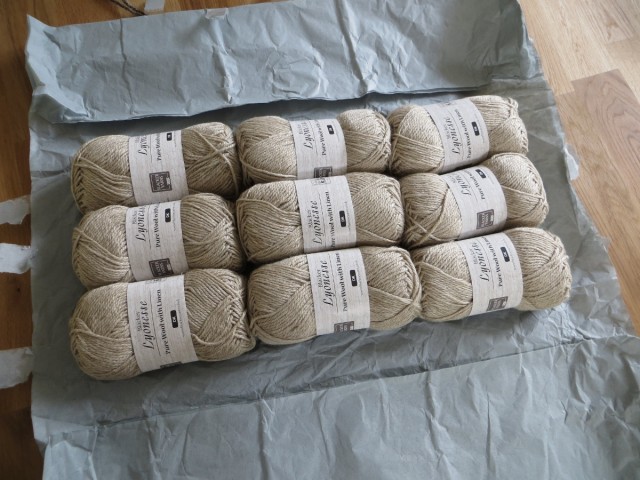In a recent post about my ultimate local yarn, I “declared” that I tried to prefer European yarns. This principle is often shaken by beautiful photos of hand-dyed yarns on SNS, and I allow myself from time to time not to observe it because I’m not a sort of “radical” person, but I tried to keep it as often as possible. And I was recently faced with a dilemma I hadn’t expected.
That happened when I wanted to buy a British yarn.
You, yarn lovers, should know that the eyes of knitters around the world are focused on the UK at the moment. We have to say this country has a long tradition of textile industry and is the one which has developed the most sheep breeds in the world. Who don’t know tweed, kilt, Rowan, Shetland, Fair Isle, Guernsey?
But this revival of interest is quite recent, from the last year exactly, when the famous designer Kate Davies launched her original yarn Buachaille, sourced from and made in Scotland. She was followed by Ysolda Teague, who released her Blend No.1, and Rachel Atkinson who commercializes the yarn produced from the fleece of her father’s flock, which was bought until then by British Wool Marketing Board at the price close to zero (read this educational post) – and her brand is called justly Daughter of a shepherd. We can see here the achievement of Buy Local movement and the awareness of the British on their heritage that was in peril. We can add that Knit British – love local wool, a podcast by Louise Scollay, which gives you an overview of British wool, contributes to this movement.
And this social media exposure attracted the eyes also on the yarn companies which subsisted after the decline of the textile industry, and Blacker Yarns is an example among those who all deserve our attention.
This brand was founded by Sue Blacker, president of The Natural Fibre Company which produces yarns from local farmers’ fleece. The eponymous brand also commercializes British yarns, and I get back to our « sheep » (meaning subject), as say the French.
Her yarns are British, sourced from and produced in the UK. But what the UK means exactly?
The UK doesn’t only consist of Great Britain Ile and the Northern Ireland. The yarn I wanted to buy is a blend of wool and linen, and the wool comes from the Falklands. These isles are part of Britain overseas territories, far away from Europe, off the coast of Argentine (do you remember the Falklands War?), almost at the southernmost point of the South America (and farther than Uruguay of Malabrigo!)
If you are a British, the purchase of this yarn could present as an act of support to the domestic economy. But for a Japanese who lives in France, this yarn is just not local, so not very ecological as for carbon footprint, hence the dilemma.
After much hesitation, I finally bought the yarn in question. I have to admit my curosity was stronger than my conviction.

Admire this alignment of balls!
The yarn is called Lyonesse DK. It’s a worsted spun wool, which is rare at Blacker Yarns – 90% of their yarns is woolen spun. And as I expected, the combination of fibers, rather rare, is interesting: wool softens the handle of linen that can be sometimes hard, whereas linen gives yarn a discreet sheen. I’m rather satisfied with it (I’ll talk about the reservation in a future post about the pullover I made with it).
I’m closing this post, drawing up a sort of local wool buying guide, and there are many elements that come into play.
First the brand. If the brand is domestic, it probably produces the yarns in its country (French Brands Bergère de France and Fonty produce their yarns in France), but it is not always the case. The famous English brand Rowan produces their yarns all around the world, but not in England.
And before becoming wool ready to be spun into yarn, sheep fleece goes through several steps, from shearing to scouring, carding, combing, etc., and few mills are capable to handle all steps. It’s possible that the fleece sheared at a place is sent to another region or country to be prepared (it’s the case of my local yarn).
Finally, there is the origin of raw material and it’s the most obscure aspect of yarn production. As this mention is not required, most brands keep quiet. Given the world wool production, your yarn from a domestic brand and spun in your country can be made with Australian or Chinese wool – and I have to add that British breeds don’t mean either British wool – breeds can be exported! I won’t say we should know if your yarn is made from the fleece of Shawn, but we can stay alert to this point. Blacker yarn’s transparency is just praiseworthy.
Thank you for reading this post, and I’ll be pleased if you pay attention to these points at your next yarn purchase 🙂

